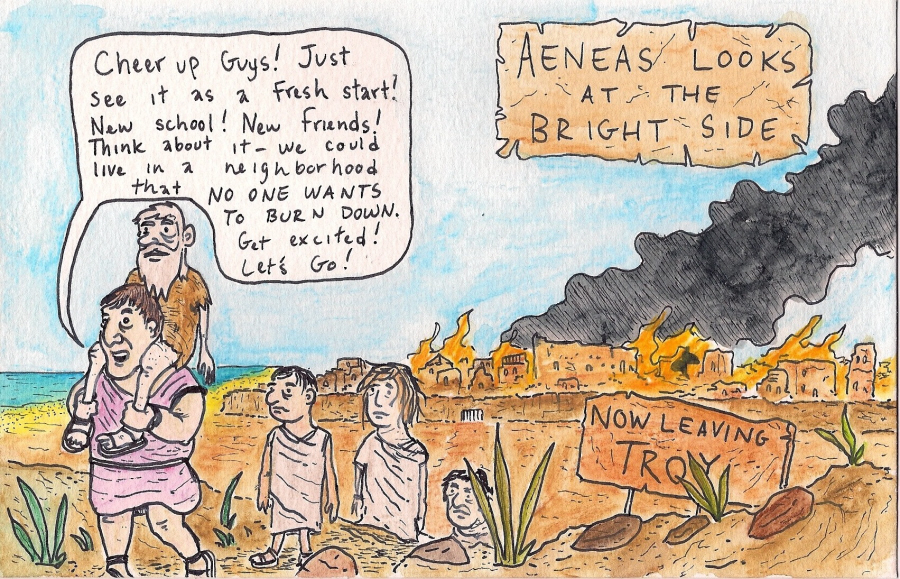Those familiar with the Aeneid will balk at certain aspects of the depiction above- why is Aeneas not being a complainer? Where are the Household Gods, rescued from Aeneas’ family home? These questions and more can be answered by the translation this illustration is based on: Vito Moreno’s 1912 Futurist translation of the Aeneid. The whole thing seems like a contradiction- a Futurist translating the Aeneid? But Moreno was a different breed of Futurist. Rather than completely rejecting mythology, history, and everything else Futurists liked to drive their race cars over, Moreno though it wise to merely update classic texts to reflect Futurists values. The lack of Penates and Aeneas’ complete lack of interest in the past or that his wife just died? All proof of Aeneas’ futurist tendencies. Moreno’s version of the Aeneid works well until it kicks into full Futurist overdrive when Aeneas is attempting to snap off the Golden Bough to gain access to the Underworld. The bough refuses to break and Futurist Aeneas, without a hint of disappointment, proceeds to order his men to build a factory that will produce machines “powerful enough to destroy the Gods.” Things get intense in the translation from here on out. Blazing up the Italian peninsula like a metallic snake of doom, Aeneas, riding in a 1909 Isotta Fraschini Tipo 8 Sala Phaeton (pictured here: http://upload.wikimedia.org/wikipedia/commons/2/28/Isotta_Fraschini_Tipo_8_Sala_Phaeton.jpg) with Breda machine guns strapped to each side of his vehicle, leads a caravan of similarly armed cars toward Mount Olympus, killing Turnus, King Latinus, King Evander, Pallas, Lavinia, and everyone else in the second half of the Aeneid as they speed by. Following this massacre of mortals, the Gods seek to stop Aeneas, only to be leveled themselves by his brutal modern technology, leading to Aeneas’ overthrow of Jupiter, and the end of the Futurist Aeneid. Although Moreno meant well, the book was neither a hit in either the Futurist community or the mainstream one. Trying to appeal to both sides of the divide proved fruitless, and there are only five known copies of Moreno’s efforts, four of which are available for purchase in Amazon.com’s used book market.

Discussion ¬